Liquid-solid phase transition time characteristics of CCD aluminum layer metal induced by nanosecond pulse laser
-
摘要:
从理论仿真计算方面开展了脉冲激光诱导CCD探测器铝层金属温升变化的液-固相变时间特性研究。通过傅里叶热传导方程计算仿真了纳秒激光诱导CCD探测器铝层金属材料的温升曲线,获得了铝层金属材料液-固相变起始时刻和液-固相变时间长度随激光脉冲峰值功率和激光入射角度的变化规律。理论计算结果表明,随着入射激光脉冲峰值功率增加,激光诱导CCD探测器铝层表面的最高温度逐渐升高,铝层材料的液-固相变起始时刻往后延迟,且液-固相变时间长度增加;随激光入射角度的增大,铝层表面的最高温度逐渐降低,液-固相变起始时刻不断前移,而液-固相变时间长度逐渐变短。研究结果表明,激光脉冲峰值功率密度和激光入射角对激光诱导CCD探测器的液-固相变时间特性有重要影响,对揭示纳秒激光诱导CCD探测器的热损伤机制有重要的理论意义。
Abstract:The liquid-solid phase transition time characteristics of temperature rise of aluminum layer metal of CCD detector induced by nanosecond pulse laser were studied from the aspect of theoretical simulation calculation. The temperature rise curve of aluminum layer metal material of CCD detector induced by nanosecond laser was simulated by Fourier heat conduction equation, and the variation rules of the starting time and time length of liquid-solid phase transition of aluminum layer metal material with laser pulse peak power and laser incidence angle were obtained. The theoretical calculation results show that the maximum temperature of the aluminum layer surface of CCD detector gradually increases with the increase of the incident laser pulse peak power, the starting time of the liquid-solid phase transition delays, and the time length increases. The maximum temperature of aluminum layer surface gradually decreases with the increase of the laser incidence angle, the starting time of liquid-solid phase transition moves forward continuously, and the time length becomes shorter. The results show that the laser pulse peak power density and the laser incident angle have important effects on the liquid-solid phase transition time characteristics of CCD detector induced by nanosecond pulsed laser, which has important theoretical significance for revealing the thermal damage mechanism of nanosecond laser induced CCD detector.
-
引言
CCD探测器作为一种半导体光电器件,以其体积小、动态范围广、灵敏度高、低功耗等优点,已经被广泛应用于电视光电探测、高空侦察、遥感等诸多领域。在光电对抗过程中,CCD探测器作为光电设备的核心器件极易受到激光辐照而产生温升,造成CCD探测器材料发生熔融、汽化等现象,从而导致CCD发生热损坏。
目前,已有很多学者对激光辐照CCD探测器的温升变化进行了研究。孙守红等人利用808 nm激光对CCD探测器进行辐照[1],获得了CCD探测器发生热熔融时的阈值。张强等人基于热传导方程理论建立了混合频率激光辐照CCD探测器遮光铝层金属材料的温升物理模型[2],理论仿真了不同模式下激光辐照CCD探测器遮光铝层材料的瞬态温度场。聂劲松等人基于有限元方法建立了1.06 μm 激光辐照CCD探测器的温升模型[3],计算了高重频脉冲激光辐照CCD探测器的温度场分布,发现脉冲峰值功率越高,诱导CCD探测器组成材料更易发生熔融。赵阳等人对毫秒激光辐照CCD探测器的热效应进行研究[4],发现激光热作用对会导致CCD探测器上层微透镜材料发生熔融、汽化等现象。李明欣等人基于傅里叶热传导方程建立了毫秒脉冲激光辐照CCD探测器的温升模型[5],发现毫秒激光诱导CCD探测器的热损失首先出现在滤光层。韩敏等人建立了1.06 μm连续激光辐照CCD探测器的热-力耦合模型[6],发现熔点较低的微透镜层最先发生熔融,造成CCD探测器温升速度减缓。任晓东等人建立了高重频脉冲激光辐照CCD探测器的温升模型[7],考虑了CCD探测器材料参数的非线性变化和熔融相变过程,发现高重复频率脉冲会引起温度积累效应,在硅基片达到熔点后,峰值温度基本保持在熔点附近。
目前,许多研究学者开展了激光诱导CCD探测器的热损伤特性与理论仿真研究,但针对纳秒激光诱导CCD探测器铝层金属材料的温升变化的液-固相变时间特性研究尚未见报道。因此,本文基于傅里叶热传导方程,理论仿真了激光脉冲峰值功率密度和激光入射角度等参数变化对CCD受激光辐照后液-固相变时间特性的影响。
1 纳秒脉冲激光诱导CCD温升的理论模型
纳秒脉冲激光辐照到CCD探测器表面时(如图1所示),CCD材料吸收激光脉冲能量产生温升。当脉冲激光能量较高时,CCD材料表面出现熔化、汽化甚至电离产生等离子体。当脉冲能量结束后,CCD材料表面温度升高到一定值后下降,当降低到熔点时,由于热传导作用,在CCD探测器材料表面将存在持续一段时间的液-固相变弛豫过程。等CCD材料表面凝固后,由于存在向周围环境空气的辐射传热过程,CCD表面的温度继续下降,直到与环境温度达到平衡。
考虑CCD探测器为三层结构(硅基底厚度为150 μm,中间层二氧化硅厚度为0.5 μm,上层铝厚度为1 μm),CCD的各层材料均为各向同性的均匀材料,则纳秒激光诱导CCD探测器的温升过程可由傅里叶热传导方程[8]描述:
$$\begin{split} \rho_{m} C_{m} \frac{\partial T}{\partial t}=&\frac{\partial}{\partial x}\left(K_{m} \frac{\partial T}{\partial x}\right)+\frac{\partial}{\partial y}\left(K_{m} \frac{\partial T}{\partial y}\right)+\frac{\partial}{\partial {\rm{z}}}\left(K_{m} \frac{\partial T}{\partial {\rm{z}}}\right)+\\ &Q(x, y, {\textit{z}}, t) \\[-12pt] \end{split} $$ (1) 式中:$ \rho_{m} $为材料密度;$ C_{m} $为材料比热容;$ {K}_{{m}} $为材料导热系数;m为CCD探测器结构的层数;T为温度;t为激光作用时间。$ Q(x, y, {\textit{z}}, t) $为激光热源项,代表激光导致物体内产生的热量,数学表达式为
$$ Q=I(1-R) \alpha \exp \left(-\alpha_{m} {\textit{z}}\right) \exp \left(\frac{-2\left(x^{2} + y^{2}\right) \cos ^{2} \theta}{r_{0}^{2}}\right) \cos \theta g(t) $$ (2) 式中:$ I $为入射激光强度;R为CCD探测器上层铝材料的反射率;$ \alpha_{m} $为第m层材料的激光吸收系数;r0为纳秒激光垂直入射在CCD探测器表面的激光光斑半径;$ \theta $为激光入射方向与CCD探测器表面法线间的夹角;g(t)为激光脉冲的时间分布函数,表达式为
$$ g(t)=\left\{\begin{array}{cc} 1 & 0 \leqslant t \leqslant \tau \\ 0 & t<0 \text { 或者 } t>\tau \end{array}\right. $$ (3) 纳秒激光诱导CCD探测器的温升过程,三层材料间满足热连续边界条件和初始温度为
$$ T\left(h_{m}\right)=T\left(h_{m+1}\right) $$ (4) $$ \left.T_{m}(x, y, {\textit{z}}, t)\right|_{t=0}=T_{m}(t=0)=300\;{\rm{K}} $$ (5) 纳秒脉冲激光诱导CCD探测器的温升过程中,探测器表面与环境空气存在热交换,因此CCD探测器上表面铝层—空气交界处的边界方程为
$$ -k \frac{\partial T}{\partial n}=-\xi S_{{\rm{B}}}\left(T^{4}-T_{0}^{4}\right)-h\left(T-T_{0}\right) $$ (6) 式中:h表示激光辐照过程中的对流换热系数,单位为 W/(m2·K);$ \xi $表示铝表面辐射率;SB为斯蒂芬玻尔兹曼常数(5.67×10−8 W/(m2·K4))。
本文利用COMSOL Multiphysics 仿真软件对波长为1 064 nm、脉冲宽度为100 ns和辐照在CCD探测器上的光束直径为115 μm的纳秒脉冲激光辐照CCD探测器的温度场进行理论计算,CCD模拟所需热力学参数来源于文献[9-12]。理论计算过程中,激光辐照到CCD探测器表面的光斑直径为115 μm,因此考虑理论模拟空间尺寸大于3倍的光斑直径,CCD探测器的模型整体宽度设定为500 μm×500 μm。为了提升计算精确度,需要对激光作用区域进行网格细化处理,因此计算过程中将CCD探测器Al遮光层、SiO2绝缘层以及Si基底层上表面进行网格细化。先对远离激光热源的Si层区域进行网格划分(单个网格单元尺寸不超过10 μm,不小于0.03 μm),之后对靠近激光热源的Al层、SiO2层及Si层上表面进行网格剖分(单个网格单元尺寸不超过5 μm,不小于0.01 μm),从而使激光作用区域获得较为细致的网格。网格剖分结果如图2所示。
2 结果和探讨
2.1 脉冲峰值功率对液-固相变时间特性的影响
当脉冲峰值功率分别为0.60×107 W/cm2、1.86×107 W/cm2、3.23×107 W/cm2、4.81×107 W/cm2、6.11×107 W/cm2、6.35×107 W/cm2,单脉冲纳秒激光诱导CCD探测器铝层面光斑中心点的温升曲线如图3所示,对应的中心点峰值温度随激光脉冲能量变化如图4所示。
从图3中CCD探测器铝层表面中心点温度的时间演化曲线可以看出,当激光脉冲辐照CCD探测器后,CCD探测器铝层材料吸收激光能量,温度上升。当脉冲结束后,由于CCD探测器的z方向热传导以及与周围空气的辐射热作用,导致了铝层材料温度下降。当铝层温度下降到熔点933 K时,由于液态转化为固态存在放热过程,因此在温度时间演化过程将存在一定时间段的液-固相变共存过程[13]。等铝层凝固后,铝层表面温度缓慢下降,直到与周围环境空气达到热平衡。激光脉冲能量越大,激光脉冲诱导CCD探测器铝层表面的温度越高,并且温度下降后降至熔点的时间往后推延,对应的液-固相变共存时间越长。从图4可知,随着激光脉冲能量的增大,辐照到CCD探测器铝层表面的激光强度增大,铝层材料吸收的激光能量增大,从而使CCD探测器铝层表面中心点的峰值温度呈上升变化。
图5为纳秒激光脉冲诱导CCD探测器的液-固相变起始时间和液-固相变时间长度随脉冲激光峰值功率密度的变化曲线。当激光脉冲结束后,由于CCD探测器与周围空气存在辐射热交换作用,导致CCD探测器表面的温度下降,降温时间演化过程中存在液-固相变温度平台区,该段时间内激光作用CCD探测器区域处于液-固共存状态。随着入射激光脉冲峰值功率增加,液-固相变起始时刻往后延迟,且液-固相变时间长度增加。这是因为激光脉冲峰值功率增大,使CCD探测器铝层表面中心点的峰值温度变大,温度回落至铝层材料的熔点温度时发生液-固相变所需的时间就越长,因此出现了液-固相变起始时刻随入射激光脉冲峰值功率增加而延后变化。激光脉冲峰值功率增大,造成CCD探测器激光作用区域的熔池热能增大,造成熔池与CCD探测器上层的空气热交换时间延长,从而出现了液-固相变时间长度随入射激光脉冲峰值功率增加而变大。
2.2 激光入射角度对液-固相变时间特性的影响
在激光脉冲峰值功率密度为4.81×107 W/cm2条件下,使激光斜入射辐照CCD探测器,得到激光入射角度分别为0°、20°、40°、60°、80°下脉冲激光诱导CCD探测器铝层表面中心点温升曲线,如图6所示。
由图6可知,随着激光入射角度增大,CCD探测器铝层表面中心点峰值温度降低,并且发现降至铝层材料的熔点温度时间前移。图7为不同激光入射角纳秒激光脉冲诱导CCD探测器的液-固相变起始时间和液-固相变时间长度随激光入射角度的变化曲线。随激光入射角度的增大,由于CCD探测器铝层表面的最高温度降低,导致了液-固相变起始时刻不断减小,并且液-固相变时间长度逐渐变短。这是因为随激光入射角度的增大,辐照在CCD探测器铝层材料表面的激光光束由圆形光斑变成椭圆光斑,在激光斜入射方向上光斑尺寸变大,从而使CCD探测器表面上的激光光斑面积变大,致使作用在铝层材料表面的激光脉冲峰值功率密度下降,从而导致了CCD探测器铝层表面中心点峰值温度逐渐降低,回落至液-固相变起始点时间前移。同时,激光脉冲峰值功率密度的下降,导致激光诱导CCD探测器铝层表面熔融区域面积减小,造成熔池与CCD探测器上层的空气热交换时间变短,从而出现了液-固相变时间长度随入射激光角度增加而变小。
3 结论
本文从理论仿真计算方面开展了激光脉冲峰值功率和激光入射角度对纳秒激光辐照CCD温升变化的液-固相变时间特性的影响研究。通过傅里叶热传导方程计算了纳秒激光诱导CCD探测器铝层材料的温升曲线,通过温升曲线获得了CCD探测器铝层材料液-固相变起始时刻和液-固相变时间长度随激光脉冲峰值功率和激光入射角度的变化规律。理论计算结果表明,随着入射激光脉冲峰值功率增加,激光诱导CCD探测器铝层表面的最高温度逐渐升高,使CCD探测器铝层材料的液-固相变起始时刻往后延迟,且液-固相变时间长度增加。随着激光入射角度的增大,由于CCD探测器铝层表面的最高温度降低,导致了液-固相变起始时刻不断前移,并且液-固相变时间长度逐渐变短。研究结果表明,激光脉冲峰值功率密度和激光入射角对激光诱导CCD探测器的液-固相变时间特性有重要影响,对揭示纳秒激光诱导CCD探测器的热损伤机制有重要的理论意义。
-
-
[1] 孙守红, 郭立红, 王立军. 808 nm激光对可见光面阵CCD的干扰损伤研究[J]. 长春理工大学学报(自然科学版),2008,31(1):19-21. SUN Shouhong, GUO Lihong, WANG Lijun. Interference damage to visible light plane array CCD induced by 808 nm laser[J]. Journal of Changchun University of Science and Technology,2008,31(1):19-21.
[2] 张强, 汪岳峰, 韩玉东, 等. 混合频率激光干扰CCD探测器的仿真研究[J]. 半导体光电,2010,31(5):787-792. ZHANG Qiang, WANG Yuefeng, HAN Yudong, et al. Simulation of mixture frequency laser irradiation on CCD detectors[J]. Semiconductor Optoelectronics,2010,31(5):787-792.
[3] 聂劲松, 王玺, 李化, 等. 1.06 μm激光辐照CCD探测器的热力效应分析[J]. 红外与激光工程,2013,42(增刊2):380-386. NIE Jinsong, WANG Xi, LI Hua, et al. Thermal and mechanical damage in CCD detector induced by 1.06 μm laser[J]. Infrared and Laser Engineering,2013,42(S2):380-386.
[4] 赵洋, 金光勇, 李明欣, 等. 毫秒脉冲激光损伤CCD探测器的实验研究[J]. 激光技术,2017,41(5):632-636. ZHAO Yang, JIN Guangyong, LI Mingxin, et al. Experimental study about CCD detectors damaged by millisecond pulsed laser[J]. Laser Technology,2017,41(5):632-636.
[5] LI Mingxin, JIN Guangyong, TAN Yong. Simulation of the Si-CCD irradiated by millisecond pulse laser[J]. Optik,2017,131:67-71. doi: 10.1016/j.ijleo.2016.11.045
[6] 韩敏, 聂劲松, 豆贤安, 等. 基于激光不同加载方式下CCD损伤特性的时间演化规律[J]. 发光学报,2019,40(6):788-794. doi: 10.3788/fgxb20194006.0788 HAN Min, NIE Jinsong, DOU Xian'an, et al. Temporal evolution characteristics of CCD detector based on different laser loading methods[J]. Chinese Journal of Luminescence,2019,40(6):788-794. doi: 10.3788/fgxb20194006.0788
[7] REN X D, LEI W H, WANG Y. Study on thermodynamic effect of CCD detector irradiated by laser[J]. Optik,2019,185:497-504. doi: 10.1016/j.ijleo.2019.03.155
[8] 欧渊, 石根柱, 李点点, 等. 416 nm纳秒脉冲激光对CCD损伤机理研究[J]. 应用光学,2021,42(3):534-541. doi: 10.5768/JAO202142.0307002 OU Yuan, SHI Genzhu, LI Diandian, et al. Research on damage mechanism of 416 nm nanosecond pulsed laser to CCD[J]. Journal of Applied Optics,2021,42(3):534-541. doi: 10.5768/JAO202142.0307002
[9] 姜楠, 张雏, 牛燕雄, 等. 脉冲激光辐照CCD探测器的硬破坏效应数值模拟研究[J]. 激光与红外,2008,38(10):1004-1007. JIANG Nan, ZHANG Chu, NIU Yanxiong, et al. Numerical simulation of pulsed laser induced damage on CCD arrays[J]. Laser & Infrared,2008,38(10):1004-1007.
[10] 毕娟, 张喜和, 倪晓武. 长脉冲激光对组成CCD图像传感器的MOS光敏单元的硬破坏机理研究[J]. 物理学报,2011,60(11):114210. doi: 10.7498/aps.60.114210 BI Juan, ZHANG Xihe, NI Xiaowu. Mechanism for long pulse laser-induced hard damage to the MOS pixel of CCD image sensor[J]. Acta Physica Sinica,2011,60(11):114210. doi: 10.7498/aps.60.114210
[11] 何跃娟, 彭青, 张薇. 金属管材中周向激光热应力场的有限元分析[J]. 应用激光,2009,29(4):317-319. doi: 10.3969/j.issn.1000-372X.2009.04.011 HE Yuejuan, PENG Qing, ZHANG Wei. Analysis of the laser-induced circumferential thermal stress fields in hollow metal cylinders by finite element method[J]. Applied Laser,2009,29(4):317-319. doi: 10.3969/j.issn.1000-372X.2009.04.011
[12] LI Z W, WANG X, SHEN Z H, et al. Mechanisms for the millisecond laser-induced functional damage to silicon charge-coupled imaging sensors[J]. Applied Optics,2015,54(3):378-388. doi: 10.1364/AO.54.000378
[13] 魏智, 金光勇, 彭博, 等. 毫秒脉冲激光辐照硅基PIN的温度场应力场数值分析[J]. 物理学报,2014,63(19):120-125. WEI Zhi, JIN Guangyong, PENG Bo, et al. Numerical simulation of thermal and stress field in silicon-based positive-intrinsic-negative photo dio de irradiated by millisecond-pulsed laser[J]. Acta Physica Sinica,2014,63(19):120-125.
-
期刊类型引用(1)
1. 张文海. 金属钢板表面纳秒脉冲激光除锈工艺研究. 中国新技术新产品. 2024(11): 50-52 .  百度学术
百度学术
其他类型引用(1)



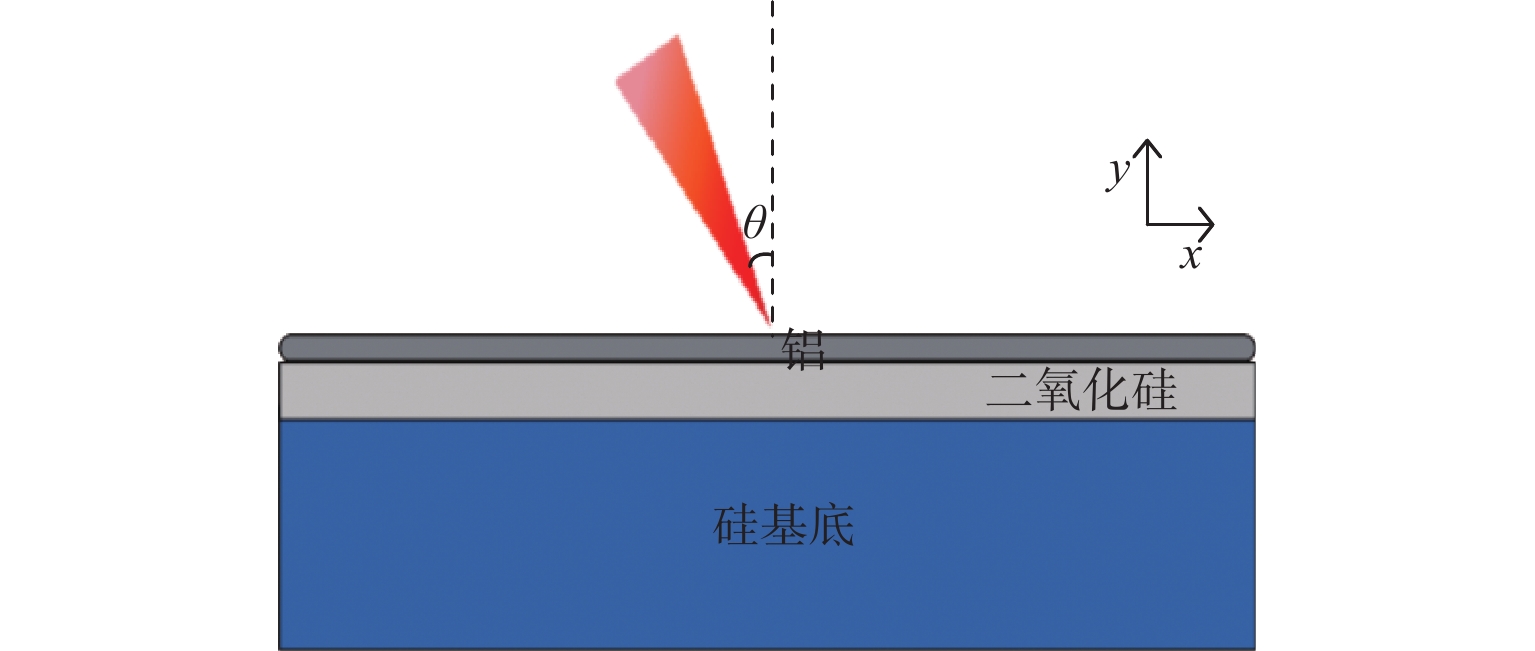
 下载:
下载:

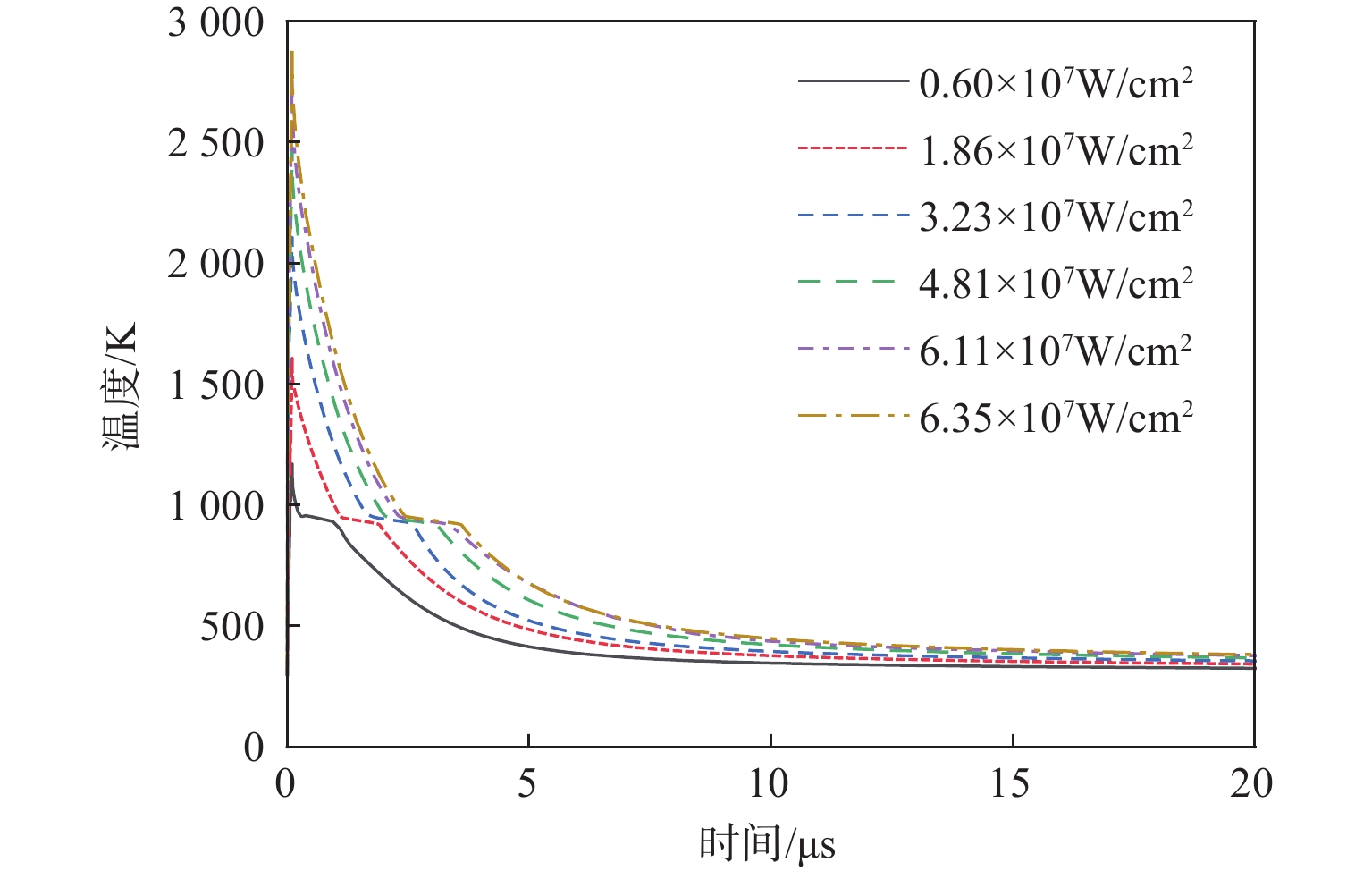
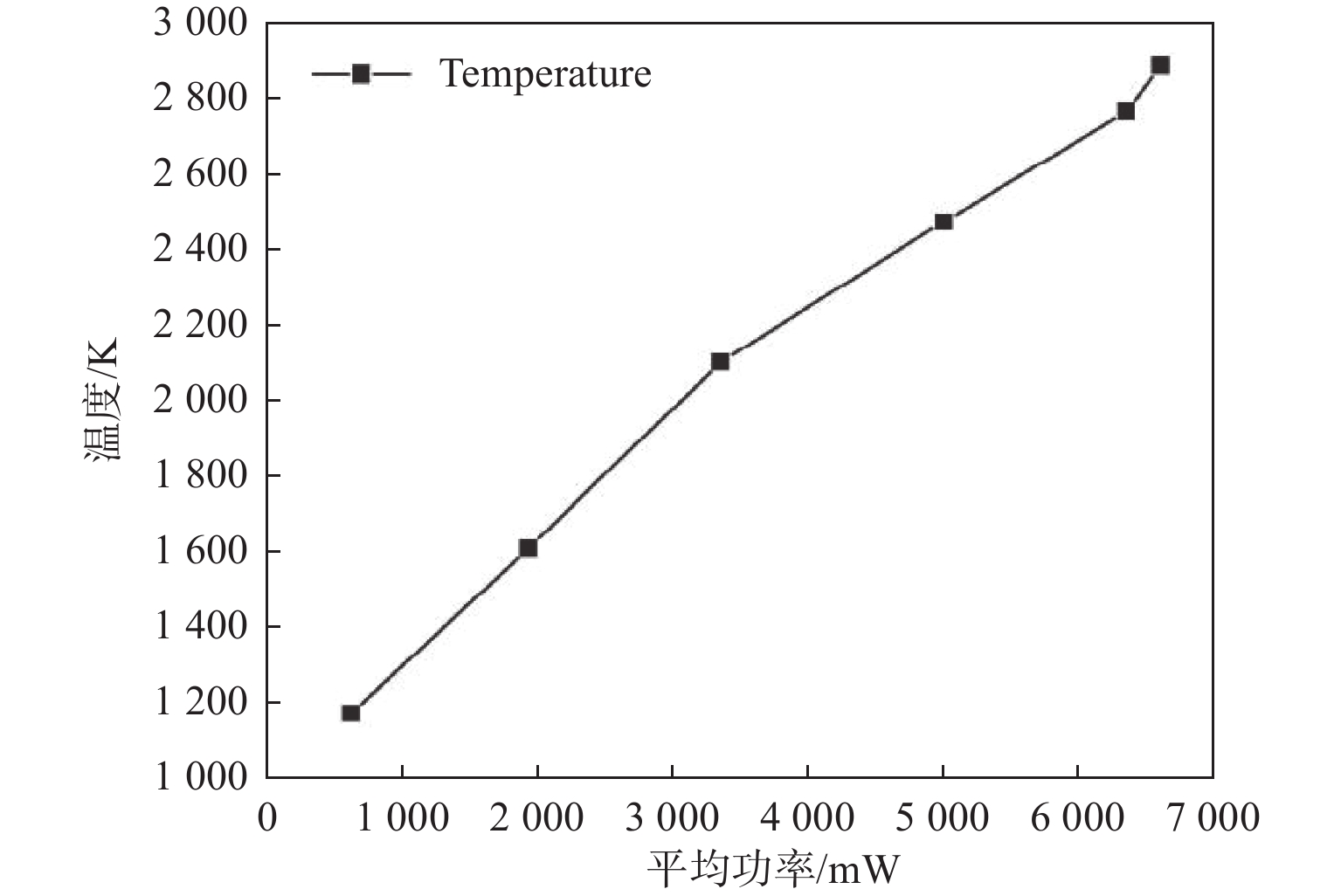

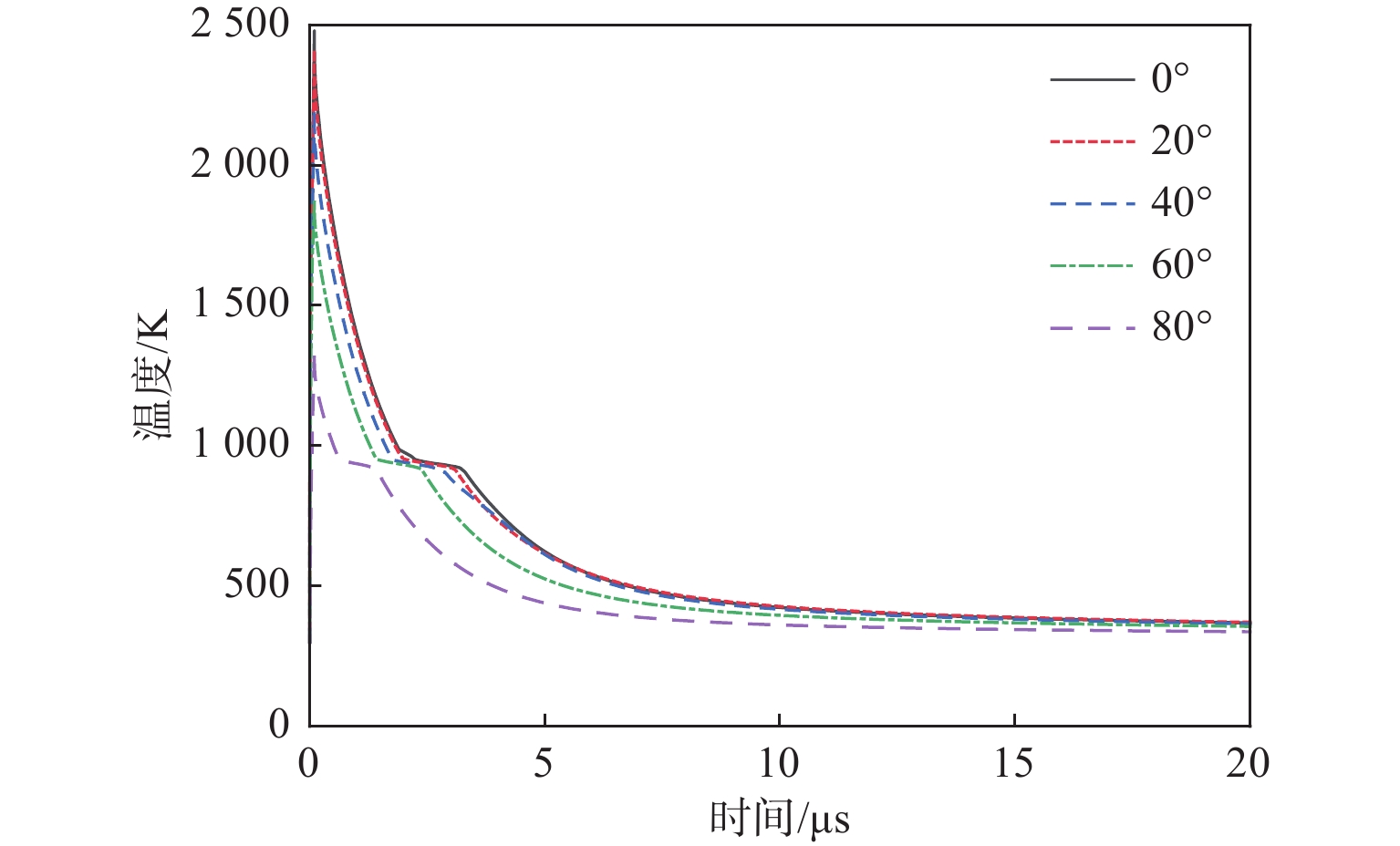
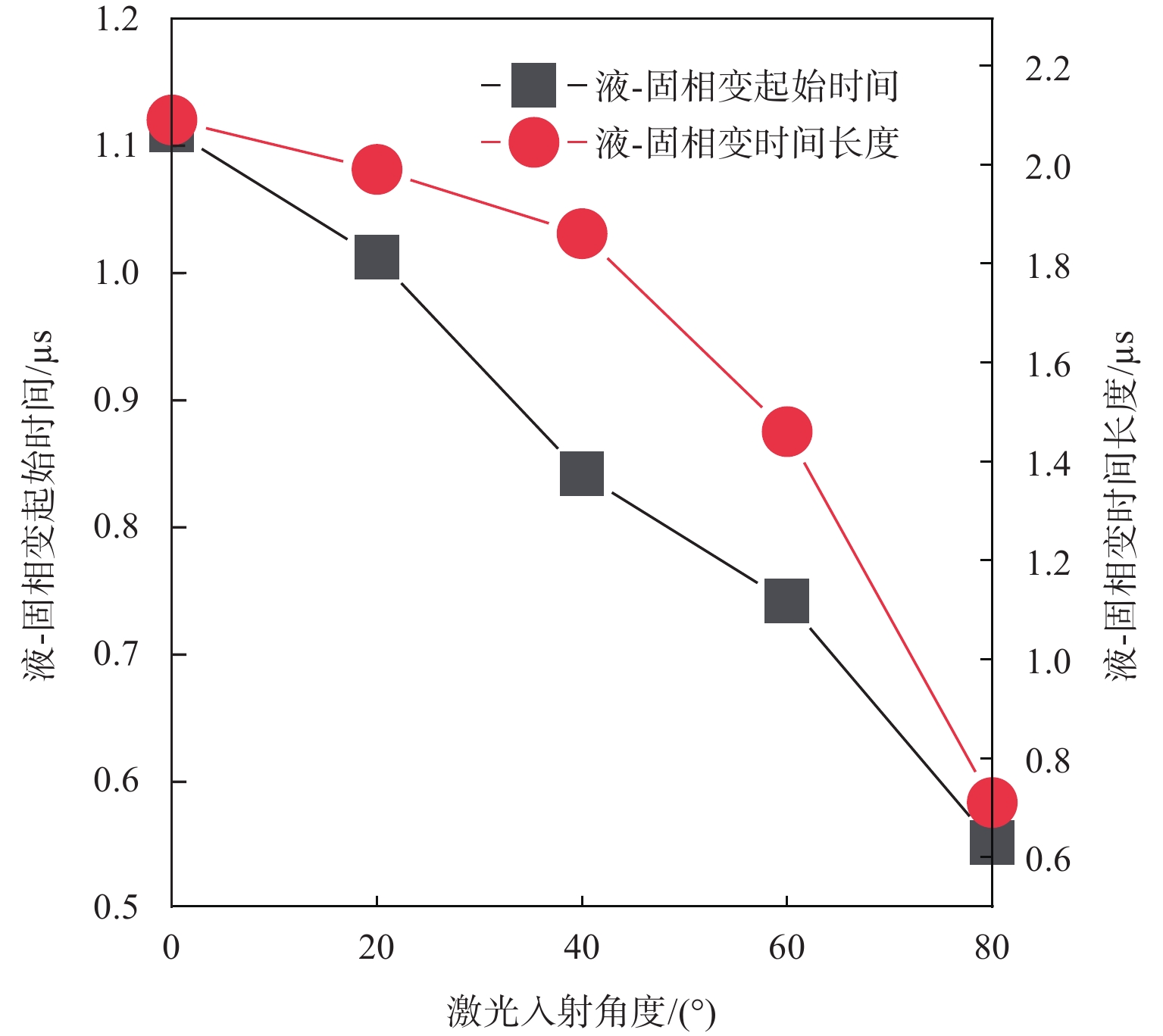

 陕公网安备 61011302001501号
陕公网安备 61011302001501号 